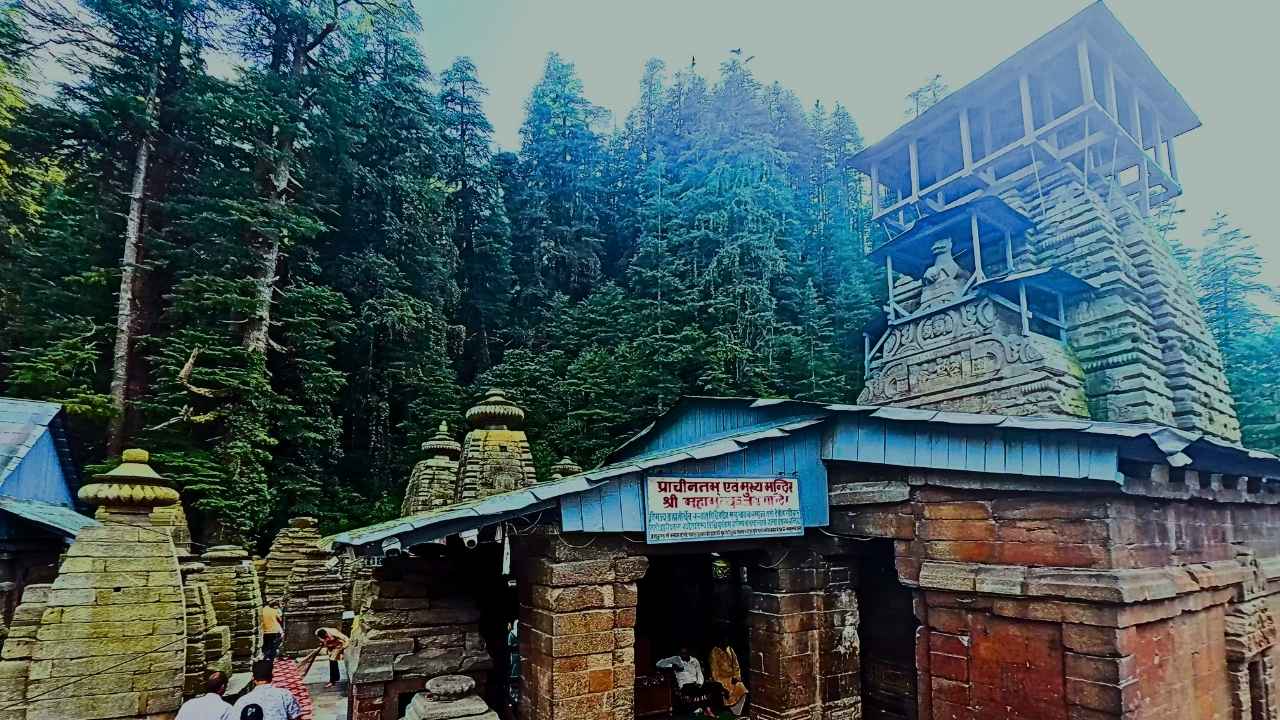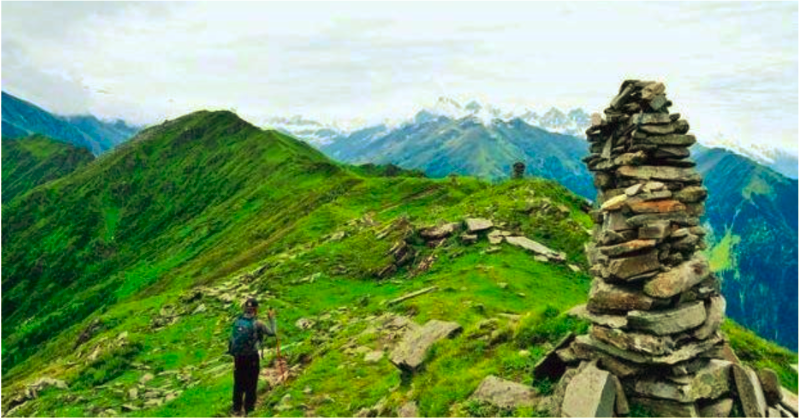Jageshwar Dham: Reawaken Your Spirit in Almora’s Temple Haven
My craving for meaning
I have been an avid traveller. But there’s a part of me that was yearning for something deeper. I wanted to visit a place that goes beyond sightseeing, beyond snapping photos, and definitely, beyond ticking another destination off the bucket list. And, I am very sure that at some point in time, you’ve felt it too! During life’s busier stretches, that part of me used to whisper for a pause. And in the quest for getting one, I found myself, quite unexpectedly, headed on a journey to the ancient spiritual sanctuary of Jageshwar Dham.
If you’ve ever wondered if travel could actually change you, join me on this journey. And hey, we won’t do this for the Instagram feed, but to change our inner world! Let’s wander together through 125 ancient temples. These are rooted in Himalayan mist and nestled amidst thick deodar forests. This valley, beloved by Lord Shiva himself, is said to be where he meditated and awakened. Come along and discover why Jageshwar Dham is more than a destination. It’s still a place of awakening.
Setting the Scene
Almora is where the Kumaon hills cradle age-old stories. It’s a place where time seems to melt with the clouds. A place where the very air feels richer, scented with pine and a hint of incense wafting from unseen shrines. Roads snake along ridges. As we drive along they reveal sweeping vistas of the verdant valleys and sun-speckled streams. For most of the year, the horizon is wreathed in mysterious blue haze. At 1870m, Almora makes you feel both incredibly small and spectacularly alive.
But even in this magical landscape, Jageshwar Dham definitely stands out. It is a hidden sanctuary tucked away in the shadows of towering deodar forests. I still remember the first glimpse. The hauntingly beautiful temple spires reached skyward, half-shrouded in morning mist, their silhouettes ancient yet unwavering.
If you’ve ever felt the thrill of the Himalayas, multiply that by wonder, and maybe, just maybe, you’ll understand my feeling of the first moments at Jageshwar.
Jageshwar Dham: History & Legends
Jageshwar Dham isn’t just any temple. It’s an astonishing complex of 125 shrines, whose roots stretch from the 7th century all the way to the 14th century. Legend tells us Lord Shiva meditated here, surrounded by the Sapta Rishis, the seven eternal sages of Hindu tradition. Some say, in old times, wishes made at Jageshwar were granted without judgment!
But that’s not the end of the story. In the 8th century, the philosopher and reformer Adi Shankaracharya arrived here, recognizing the wild spiritual power the valley held. It’s believed he established new spiritual guidelines so only righteous wishes, those not harming anyone, would be fulfilled in this place. Even the Jata Ganga river, winding through the temples, is said to possess purifying power.
When you’re standing in Jageshwar Dham, it’s easy to imagine wise souls chanting by gentle streams and generations of spiritual seekers finding clarity beneath these ancient trees. Every stone truly has a story.
The Sacred Experience of Jageshwar Dham
No two temples at Jageshwar are the same. In fact, there are 124 stone temples (and a humble 125th), all embraced by one vast forest glade! There’s the majestic Dandeshwar Temple, home to a Shiva lingam that locals believe radiates real energy. The revered Mrityunjaya Temple is famous for blessing pilgrims with protection against suffering and premature death. Elsewhere, tiny hidden shrines await, holding the kind of quiet that makes you lose track of time.
But Jageshwar’s charm doesn’t end with stone. It’s kept alive by age-old spiritual traditions and the pilgrims who return, year upon year. During Shivratri, the valley vibrates with chants, and thousands gather for Pind Daan—ancestral rituals to help loved ones find peace. Even outside festivals, you’ll see travelers meditating at dawn or sitting cross-legged under the trees, truly lost in thought.
I was welcomed by a local family for their morning rites, and sharing warm roti and sweet chai with them was honestly more comforting than any fancy meal I’ve ever had. Later, I stole a few moments of silence in the temple grounds, letting my worries fade away until all I heard was the water rushing and my own heart’s rhythm.
The Stones that Speak
Art is everywhere at Jageshwar Dham. It’s the Nagara-style architecture. These aren’t just buildings but stories hewn from stone. The magnificent shikharas, reaching upward like wishful prayers, are adorned with images of gods, guardians, and teaching moments from ancient Indian epics. Even after all these centuries, many details survive – flowers, mythic scenes, couples, warriors, and deities.
Some locals claim that certain stones are “charged.” Through old rituals, they hold the energy and prayers of countless generations. And would you want to know what my personal favorite was? I discovered those tiny, faded sculptures nestled in wall crevices. I found them intriguing because, though their faces softened and aged, they still radiated an unspoken sense of peace. At times, I could feel the very stones wanting to share wisdom. All you need to do is just stop and listen carefully.
The Heart of Faith at Jageshwar Dham
Jageshwar Dham is not just for souls seeking solitude. During my visit, I encountered visitors in various combinations – families on annual pilgrimages, solo explorers who’d traversed half the country, and priests who served as both guides and guardians. Everyone was quick to become friends, sharing stories, directions, and morning darshan tips with warmth you can’t fake.
I had a long chat with Pandit Ajay, whose family has served the temples for seven generations. “Jageshwar is for anyone who comes with an open heart,” he insisted, not just for Hindus. That evening, we drank smoky chai and swapped travel tales until the stars came out.
If you ever feel uncertain wandering these ancient paths, just ask a local. You’ll likely be met with legends, prayers, and an invitation to explore spiritual traditions that have endured for centuries.
Practical Wisdom
Thinking of traveling to Jageshwar Dham? Here’s what I wish I’d known:
How to Get There:
The temple complex is about 35 km from Almora city (Uttarakhand) and is best reached via road. Hire a taxi, opt for a local bus, or savor the winding drive if you have your own vehicle (the journey from Kathgodam railway station takes about 4-5 hours).
Where to Stay at Jageshwar Dham:
There are basic lodges and guesthouses right in Jageshwar village, or you can choose scenic hillside resorts in Almora for a bit more comfort. For a peaceful getaway, try to avoid peak festival dates.
When to go:
March to June or September to early November for the clearest skies, mild weather, and thriving green forests. If you yearn for dancing crowds and festival energy, visit during Shivratri (usually February/March).
What to Pack:
Bring cardigans. The mornings and evenings in the hills are usually chilly, even in summer. A small flashlight, a reusable water bottle, and sturdy walking shoes are essential. Carry cash for small purchases; ATMs are rare in the hills.
Respecting Local Customs at Jageshwar Dham:
Dress modestly (covering shoulders/knees). Be mindful of temple etiquette. Remove shoes, avoid loud conversations, and don’t photograph rituals unless you have permission.
Eco-Friendly Advice:
Carry out all trash. Support local businesses for food and handicrafts. The deodar forests are sacred; avoid disturbing the wildlife.
What Jageshwar Dham Gave Me?
It’s hard to find the right words for the transformation that happened in Jageshwar. I arrived tired, a little scatterbrained, juggling the daily hustle and a to-do list four pages long. I left carrying something much lighter—but also much greater. Peace. Clarity. A kind of stillness I’d forgotten in modern life.
The experience gently asked me: What do you truly wish for? Not just for yourself, but for the world around you? Being at Jageshwar Dham awakened a renewed sense of gratitude for the small, sacred things: the feel of mountain air before sunrise, the sound of temple bells at dusk, a stranger’s kindness, a moment’s silence inside a stone sanctum.
Honestly? I wish everyone could feel what I did. Not just the “energy” of the place, but the realization that our journeys—whether in the Himalayas or at home—can be gateways to awakening, if we allow them.
Final Thoughts
If your soul has ever felt heavy, or if you’re searching for a sign that it’s time to journey inward, Jageshwar Dham is waiting. More than an ancient temple complex, it’s a living invitation—a reminder to pause, to reflect, and to reawaken what matters most: your own spirit.
Have you ever had a travel experience that changed the way you see yourself? I’d love to hear your story. Comment below and let me know about your sacred journeys, your spiritual awakenings, or even your questions about planning a trip to Jageshwar Dham. Let’s build a circle of fellow seekers, dreamers, and wanderers.
And if you’d like to see what Jageshwar looks and feels like before you plan your trip, check out my latest video on my channel, Life is an Endless Vacation. Follow along for more stories, guides, and wisdom from the road.
Until next time, travel well, and may your journey be as meaningful as your destination






